New 2011 Antarctica Panoramas

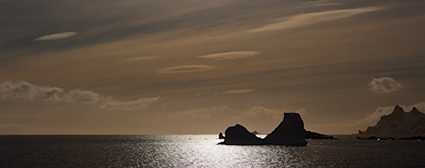
Here’s a collection of panoramas from my 2011 Antarctica Voyage.
Read daily posts from my 2011 Antarctica Voyage here.
Find out about upcoming Antarctica digital photography workshops here. Read More


Here’s a collection of panoramas from my 2011 Antarctica Voyage.
Read daily posts from my 2011 Antarctica Voyage here.
Find out about upcoming Antarctica digital photography workshops here. Read More
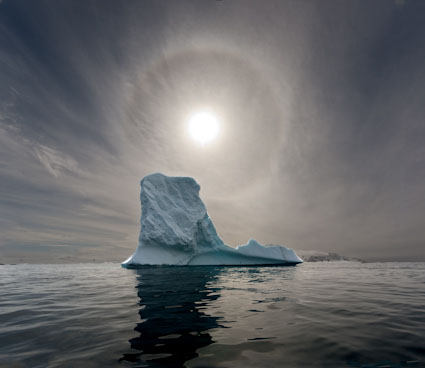
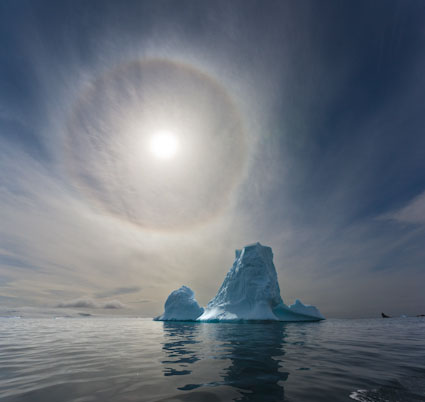
Here’s a collection of new images from my 2011 Antarctica Voyage.
Read daily posts from my 2011 Antarctica Voyage here.
Find out about upcoming Antarctica digital photography workshops here.
Read More
No High Pass sharpening
Low Radius High Pass sharpening
High Radius High Pass sharpening
There are three methods of sharpening in Photoshop that we should all be aware of: Luminance, Edge and High Pass sharpening. In this order, the three methods become progressively more complex and go to greater lengths to reduce the accentuation of noise.
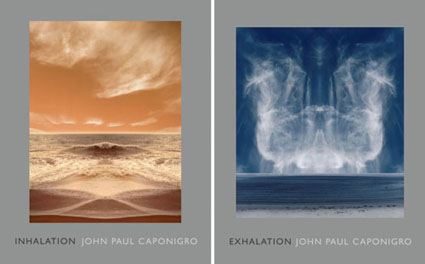
Personal Projects
Defining a project is one of the single best ways to develop your body of work. When you define a project you focus, set goals, set quotas, set timelines, create a useful structure for your images, collect accompanying materials, and polish the presentation of your efforts so that they will be well received.
Focusing your efforts into a project will help you produce a useful product. A project gives your work a definite, presentable structure. A finished project makes work more useful and accessible. Once your project is done, your work will have a significantly greater likelihood of seeing the light of day. Who knows, public acclaim may follow. Come what may, your satisfaction is guaranteed.
Create a mission and set goals.
Define the purpose of your project and what you’d like to achieve through it. Many times, people adopt the mission and goals of others without first checking if those goals are personally beneficial. Some have professional aspirations, others don’t. Your goals will help you determine projects and timelines that are appropriate for you. The few moments (or hours) you spend clarifying why you’re doing what you’re doing and what you’d like to see come of it will save you hours, months, even years by ensuring that you’re going in the right direction – a direction of your own choosing. When you take control of your personal projects, you also take control of your life.
Make a plan to achieve your goals.
A plan will help make your project a reality. A simple action plan is all you need to get started. Action plans define the steps that are required to achieve completion. Action plans should be clear and practical. Action plans should be flexible; odds are, things will not go exactly according to plan and you’ll need to modify your plan to accommodate surprises, both pleasant and unpleasant. Reality happens. Grace happens too. Having defined what you need to accomplish, your unconscious will go to work on the task, generating many ideas. You’ll find yourself ready to make the most of unexpected opportunities as they arise.
Set a timeline.
A timeline can be used to combat procrastination and/or distraction and encourage you to produce work. Set realistic timelines. Unrealistic timelines simply produce frustration.
Identify where and when you’ll need and who will help you.
While many artists define and produce projects themselves, some artists engage a curator, gallery director, publisher, editor, agent, writer, or designer to help them realize a project, in part or in whole. Finding the right collaborator(s) can improve any project. Above all, seek feedback. Seek feedback from people with diverse perspectives whose opinions you value and trust. One thing you can always use, that you can never provide for yourself, is an outside perspective. People with different perspectives may identify ways to improve, expand, or extend the reach of your project. Remember, feedback is food for thought, not gospel. In the end, all final decisions are your decisions; it’s your project.
Stay focused and follow through.
You can work on multiple projects at a time. Be careful that you don’t get scattered. Starting projects is easy. Finishing them is hard. Make sure you’re working on the best project. List all your possible projects and identify the ones that are most important and the ones that are easiest to finish. If you’re lucky enough that the same project fits both criteria, focus all of your efforts there. Otherwise, you’ll have to strike a balance between what’s practical and what’s most important to you. Only you can decide this and the balance is likely to shift as time passes and circumstances develop. Look for a common theme among projects. Often your projects will be related. Focus your efforts in related areas. It’s very likely those areas have greater relevance for you than others. Your work will be perceived as stronger and more cohesive if your projects relate to one another, implying evolution.
What’s your project?
A project is a wonderful thing. It gives direction. It brings clarity. It increases productivity. It produces tangible results. It brings personal growth. It presents your work in the very best light. You and your work deserve this. Pick your projects well. They define not only how other people see you but also what you become. You are what you do. Take the first step today; make a commitment to create a personal project. (Write something right now – put your words somewhere where you’ll constantly be reminded of them and can continue refining them!)
Plan to plan.
Many people refuse to plan, especially in creative fields where discovery is desired. They say, “Failing to plan is planning to fail.” Everyone needs a plan. Often, when you start a project, knowing you need to learn more as you go forward, you feel like you don’t have enough of the pieces to make a plan or you don’t have all of the pieces to make a complete plan. My recommendation is to start with a rough plan and continue to refine it as you go.
Stay flexible.
The best plans aren’t written in stone. The best plans remain flexible. Flexible plans allow you to make course corrections along the way as you learn more about your subject, your medium, yourself, and your audience. Expect to update your plan. I find that, if I don’t update my plan during the development of a project, this a clear indicator that I haven’t found the insight(s) necessary to complete it. I expect to be changed, for the better, by the projects I engage in. I expect to grow.
It helps to have a mission.
You have so many options before you, and so many more will soon present themselves to you, that you’ll find it challenging to choose which project(s) to move forward on or which path(s) to choose during project development. Defining a mission for your creative efforts in general will help ensure that you stay on track.
Be prepared to be surprised.
You don’t have to know all the answers before you begin to work. You just have to know the most important questions. Creating is a matter of solving mysteries, of finding answers. You don’t have to solve a mystery completely; you just have to find a few answers that you can stand by. If you’re lucky, you’ll find new questions and new mysteries along the way.
Find your groove. Find your message.
Doing things consciously, repeatedly, and consistently brings mastery. Repeat your successes … and find meaningful variations on them. When you do this you give your work a theme and style, which communicate a message. When does a groove become a rut? Don’t worry about the rut too soon, most people don’t stick with one thing long enough to find a groove. They go off road, traveling anywhere and everywhere, by any and all means, and ultimately don’t end up anywhere in particular, much less a place to return to, a place they can call their own.
Past projects lead to new projects.
Often the seeds of future work lie in present work. Themes that were unclear or latent, at the beginning of a personal project, once developed, lead to new lines of inquiry and more work. A creative life is never truly over. The best creative lives evolve; growing deeper, more complex and more sophisticated.
Prepare to make your work effective.
Even the best images will go unnoticed if they’re not presented and promoted properly. If you’ve spent a significant amount of time and resources to develop a personal project, you own it to yourself to see it presented well. This may be as simple as presenting your images well to yourself or as complex as promoting a publication and or exhibit, physically and/or virtually.
Make visible touchstones to guide your progress.
If you’ve got a personal project you want to complete, make a visible touchstone and keep it in one or more places where you can see it frequently. By doing this, you’ll be directing your conscious mind to focus on it and suggesting to your unconscious mind that this is a matter of importance – both will start to work on the challenge, even when you’re unaware of it. You will literally be sleeping on it. Many of the best ideas come during this period of gestation and incubation.
Projects take time.
It’s unlikely that you’ll be able to finish a project in a day. Projects can take weeks, months, or even years to complete. Some projects are ongoing and never end, producing many milestones along the way (publications, exhibitions, commissions, etc). Some projects lie dormant for a period of time and then suddenly come to life again. Projects have a life of their own. Personal projects require commitment, but the depth of your commitment will be reflected in both you and your work and in the achievements you make with it.
Read more and see specific examples on scottkelby.com.
Read more in my free creativity ebooks.
Discover and develop your personal projects in my digital photography workshops.
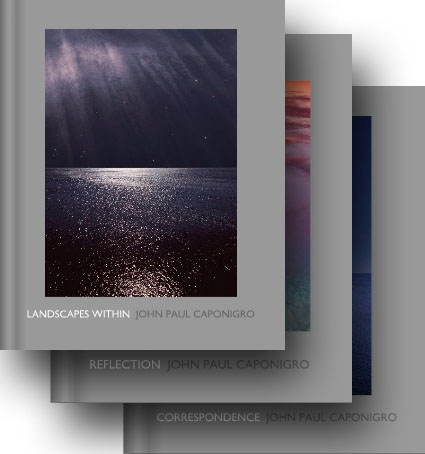
Defining a project is one of the single best ways to develop your body of work. When you define a project you make a commitment, set goals, set quotas, set timelines, create a useful structure for your images, collect accompanying materials, and polish the presentation of your efforts so that they will be well received.
Make a commitment. Making a commitment is perhaps the single best thing you can do to advance your work. You’ve already made a commitment to make images. Now make a commitment to present your images in the very best light. You deserve it. Your work deserves it. Once you make a commitment the chances that your work will improve grow exponentially.
The type of project you pick will set a quota for a minimum number of images – and in some cases an upper limit. Pick a project and you’ll instantly know how many images you need to collect/produce – and in some cases a maximum number you can include.
Show only your best work. It’s easy to be tempted to finish hastily, including lesser works amid stronger works in order to reach completion. Resist this temptation. When assembling a collection, lesser works dilute the strengths of better works.
In addition to producing, editing, and sequencing images, projects often need to be packaged in appropriate forms with accompanying materials, typically text, that make them ready for presentation and distribution. These finishing touches communicate additional useful information to a viewer.
While many artists define and produce projects themselves, some artists engage a curator, gallery director, publisher, editor, agent, writer, or designer to help them realize a project, in part or in whole. Finding the right collaborator(s) can improve any project.
Above all, seek feedback. Seek feedback from people with diverse perspectives whose opinions you value and trust. One thing you can always use, that you can never provide for yourself, is an outside perspective. Remember, feedback is food for thought, not gospel.
Set a timeline. A timeline can be used to combat procrastination and/or distraction and encourage you to produce work. Set realistic timelines. Unrealistic timelines simply produce frustration.
Focusing your efforts into a project will help you produce a useful product. A project gives your work a definite, presentable structure. A finished project makes work more useful and accessible. Once your project is done, your work will have a significantly greater likelihood of seeing the light of day. Who knows, public acclaim may follow. Come what may, your satisfaction is guaranteed.
You can work on multiple projects at a time. Be careful that you don’t get scattered. Starting projects is easy. Finishing them is hard. List all your possible projects and identify the ones that are most important and the ones that are easiest to finish. If you’re lucky enough that the same project fits both criteria focus all of your efforts there. Otherwise, you’ll have to strike a balance between what’s practical and what’s most important to you.
Only you can decide this and the balance is likely to shift as time passes and
A project is a wonderful thing. It gives direction. It brings clarity. It increases productivity. It produces tangible results. It brings personal growth. It presents your work in the very best light. You and your work deserve this. Take the first step today; make a commitment to create a personal project.
(Write something right now – put your words somewhere where you’ll constantly be reminded of them and can continue refining them!)
Find an extended version of this article here.
Learn more about creative planning and goal setting here.
Learn more in my creativity workshops here.
This is a selection of my top 12 images of all time. This selection doesn’t reflect sales, publication, or activities on the web. It simply reflects my opinion. Click on the titles to find out more about each image.
Geography
Antarctica, California, Iceland, Utah
Process
The focus of my energies this year was to bring three bodies of work to completion, not done as in over, but done as in enough to achieve real depth and to reveal the seeds that leads to new work.
Concepts
Two bodies of work merged; Inhalation and Exhalation found a larger shared envelope in Respiration. In Respiration, symmetry elicits a rich upwelling of associations both the archetypal and the individual highlighting the role of the viewer’s personal experience in the process of interpretation. In Refraction, the mystery light patterns partially reveal fields of energy and information encoded holographic universe relativistically perceived. Quantum editions were released (viewer’s choose which and how many variants are manifested in print form) allowing the viewer’s perception to determine the final shape a print edition takes.
Magnificent Moment
I spent a great deal of time entranced by changing light on and in flowing water patterns. On California’s Guadalupe Beach, on a long sunny afternoon, moving back and forth, in and out of constantly shifting water courses I found myself lost in flow in a timeless experience. I drank nothing but felt that a deep thirst had been quenched.
View more of my Annual Top 12 Selections here.
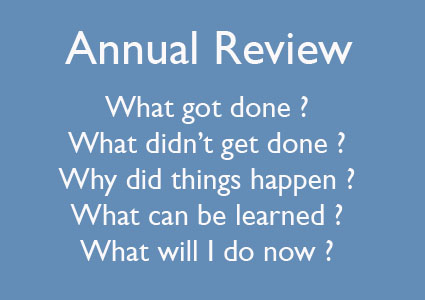
One of the things I do at the beginning of every year is review the accomplishments of the past year.
I take my projects list from the last year and color code it, assigning one color for done, one color for soon to be done, and another color for not done.
I want to know what happened. It feels great to see a list of everything that got done, especially when you get a significant surprise windfall. It can also be disappointing to see what didn’t get done, especially when the items that weren’t accomplished are important. Seeing it the items collected in one place is always revealing.
I want to do more than just see clearly what happened. I also want to know why things happened.
I find the vast majority of things that got done were things I identified as important and scheduled time for – wishing won’t make things happen. If something great and unexpected happened, I want to know why it happened, so I can make similar things happen again. If at the end of the year, I’ve completely rewritten my plan for the year, but it’s been substantially improved, I’m delighted.
If something important didn’t happen, I want to know why. I want to learn from my failures. How many items are close to being done? (A calendar date can sometimes be arbitrary.) Was something delayed for an important reason? Will the delay make it more successful? Did I not see the problem clearly? Were my expectations unreasonable? Did I not perform at peak? Did I overextend myself, taking on too many projects? Did I not allocate enough resources? Did I have the wrong team? Was the timing not right? Did I get distracted? What I can do to avoid this in the future? How can this apply what I learned on one project to my other projects?
This yearly review helps me mentally consolidate everything I’ve accomplished and everything I’ve learned. Often, while I’m doing this review, I learn more things and find more ideas. At the end of the review, learn from my failures and repeat my successes. I want to know if I’m on track and moving forward toward my long term goals.
With those insights fresh on my mind, I make a new projects list for the next year. (I copy last year’s list and delete everything that got done or is no longer relevant, add new items but be careful not to add an unrealistic number, and prioritize them.)
What plans will you make for your creative life now?
Learn more about creative planning and goal setting here.
Learn more in my creativity workshops.
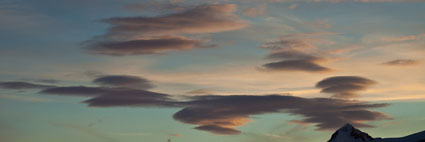
Plan for success.
I don’t make New Year’s resolutions. I make those kinds of commitments at any time of year, whenever it becomes clear they’re necessary. But I do make plans at the beginning of every year. I review my Mission, Goals, Projects, and Actions lists. While I do this at the beginning of the year, this isn’t the only time I do it. I also do this every time I find something significant has changed in my life. Doing this helps me clarify where I want to go, make sure I’m on the path to getting there, outline the steps necessary to get there, and set realistic timelines. Doing this consistently has helped me more than double my productivity, in a meaningful way. It has also helped me make tough decisions when I’m faced with too many choices. It’s not that I didn’t have a life’s calling before I wrote my mission. It’s just that I wasn’t clear about it. Now I am. As a result, I feel personally empowered. To find my mission took a lot soul-searching, a little time, and it’s still a work in progress.
Make your plan.
Whether you’re engaged in your creative life professionally or simply as a vehicle for personal growth (an important distinction to make), I recommend you make a creative plan. If you do this, you too will find both your productivity and fulfillment will increase, in a way that’s meaningful to you. Having defined what you need to accomplish, your unconscious will go to the work of fulfilling it, generating many ideas over time. You’ll find yourself ready to make the most of unexpected opportunities as they arise. Put this all in writing using your own words. Writing increases retention 72%. If you write something down, you’ll be 75% more likely to take action on it. Remember, while other people can help you discuss and refine your plan as it develops, no one can do it for you. For you to truly understand and benefit from it, you have to do it. More importantly, for it to be right for you, it has to be yours.
Break it down into clear manageable pieces.
Set a mission (why you’re doing it), goals (what outcomes you want), projects (the big things you do)(set goals for 1 year, 2 years, 3 years, 5 years, and end of life) and actions (the small steps you take to getting your projects done)(detail your 1 year next actions list) for your creative life. You’ll have one mission, several goals, many projects, and innumerable actions. Many people use a metaphor of varying altitude to describe the relationship between these parts; the mission is cruising altitude where you see the big picture while the actions are on the runway where you see more specific details. Moving from why to how to what, the higher levels are inclusive of all the lower levels, while the lower levels point toward achieving the prime directive. The specific words you choose for the higher levels are often more important than the words you choose for the lower levels, so it’s likely you’ll revise them many times. As you drill down, the items get more concrete, specific, timely, and numerous. For this reason, many people find that the most difficult part of the plan to do is the simplest, least detailed, but most abstract portion ¬– the mission. Some like to work bottom up, rather than top down, because they can sink their teeth into something more concrete. You can work it either or both ways – top down or bottom up. However you get there, make sure that when you arrive that your mission really resonates within you and is something that you would consider an inner calling, not something generated out of today‘s particulars and practical realities. A mission should call you to a higher ground of your own choosing and activate new inner resources along the way. Many find that by aligning their efforts with something greater than themselves (i.e. service to others), they do better work and derive more satisfaction from it than they could have first imagined.
What plans will you make for your creative life?
Start now!
Read more in my free PDF ebook Make Plans.
Learn more in my creativity workshops.
Bambi Cantrell
John Paul Caponigro
Douglas Dubler
Greg Gorman
Chase Jarvis
Steve McCurry
Jay Maisel
Jeff Schewe
Here what top pros have to say about their printing – and Epson’s Stylus 900 Series printers.
Learn more in my digital photography and digital printing workshops.
Read more with my online Printing Resources.
View more with my Printing DVD.

